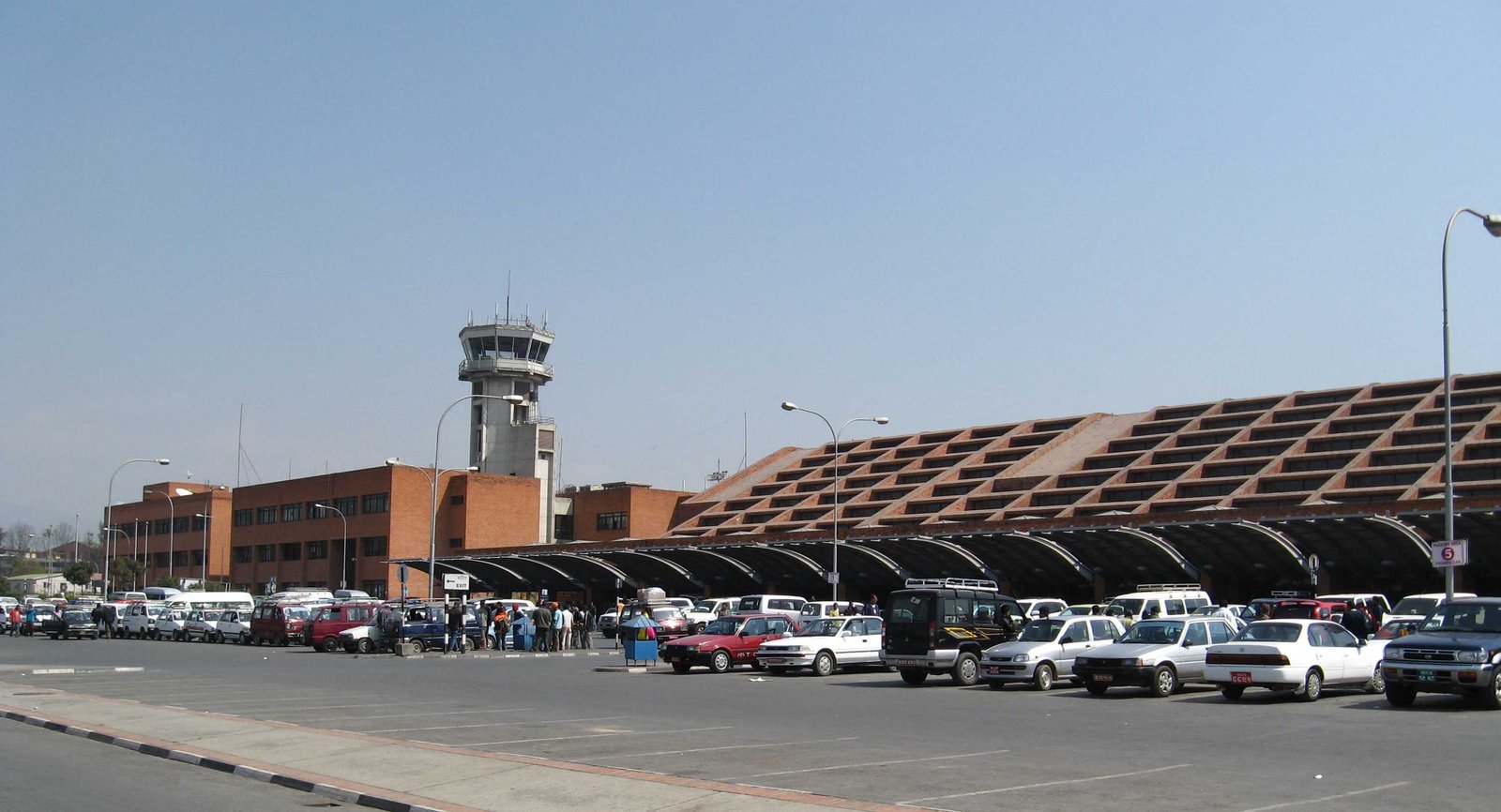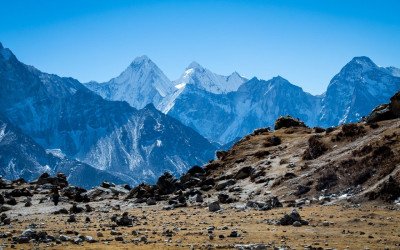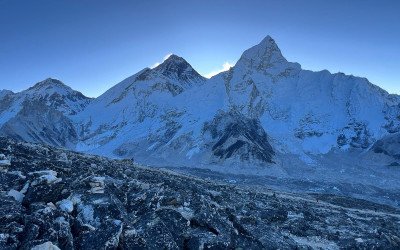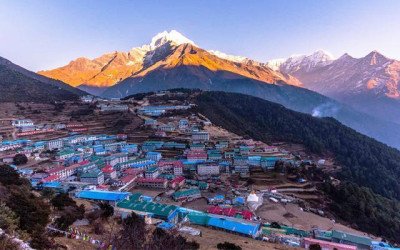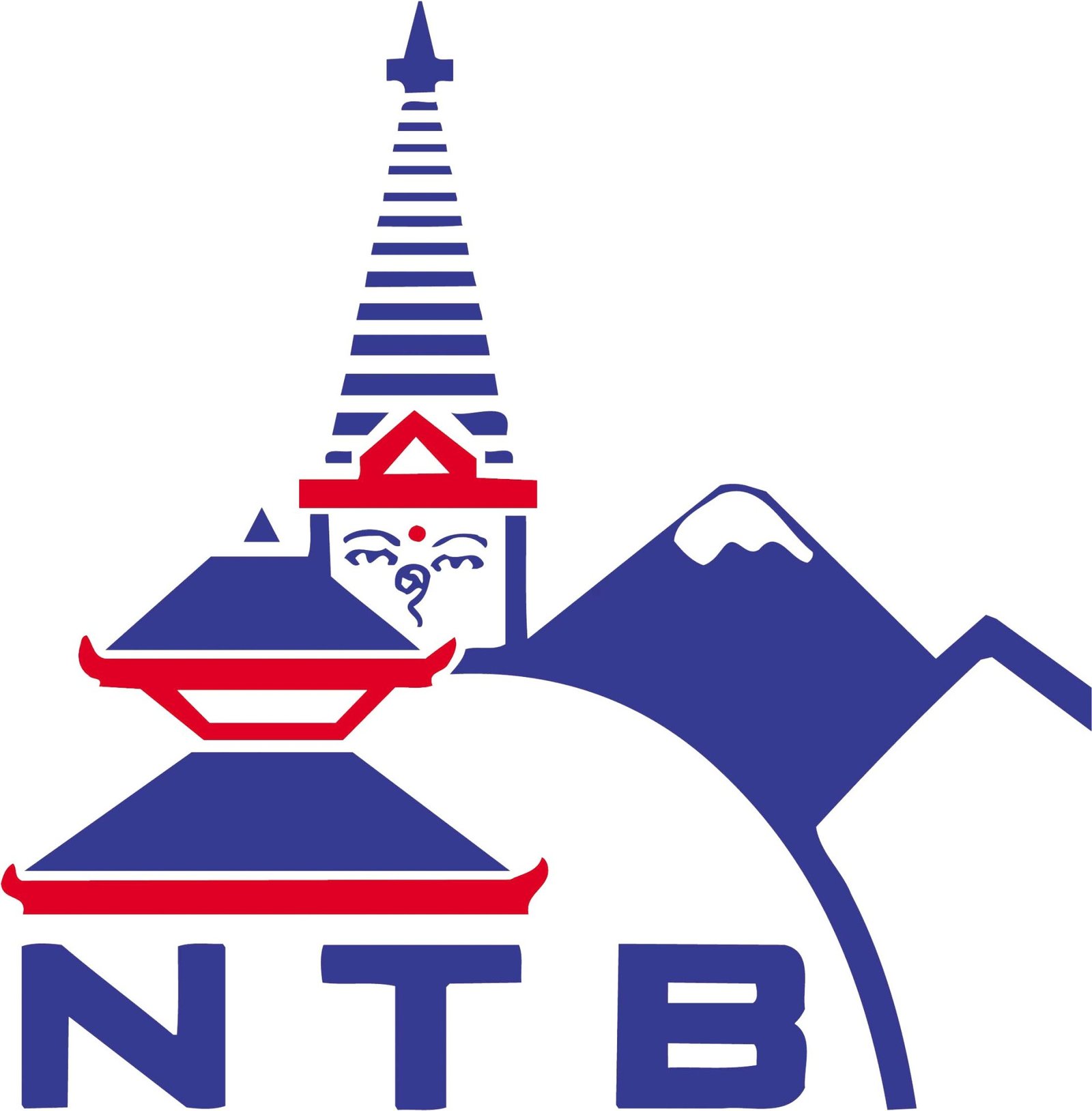- Registered Company
- More than Decade of Experience
- Customer Satisfaction is our motto
Trip Facts
-
Group Size1-15 pax
-
Max Elevation5644 m
-
GradePrivate
-
TransportationJeep/ Hike
-
AccommodationGuest House/ Lodge
-
Trip Length20 Days
-
Best MonthAutumn and Spring
-
WIFIAvaliable
-
Trip ModeModerate
-
MealBreakfast, Lunch and Dinner
-
Trekking StyleHike-Climb
-
Start FromKathmandu
-
End PointKathmandu
Outline Itinerary
Day 01: Arrival in Kathmandu
Day 02: Drive from Kathmandu (1400 m) to Bhandara (2100 m)
Day 03: Trek from Bhandara (2100 m) to Sete (2575 m)
Day 04: Trek from Sete (2575 m) to Junbesi (2670 m)
Day 05: Trek from Junbesi (2670 m) to Nunthala (2220 m)
Day 06: Trek from Nunthala (2220 m) to Bupsa (2360 m)
Day 07: Trek from Bupsa (2360 m) to Surke (2290 m)
Day 08: Trek from Surke (2290 m) to Phakding (2610 m)
Day 09: Trek from Phakding (2610 m) to Namche Bazaar (3440 m)
Day 10: Acclimatization Day in Namche Bazaar
Day 11: Trek from Namche Bazaar (3440 m) to Tengboche (3860 m)
Day 12: Trek from Tengboche (3860 m) to Dingboche (4410 m)
Day 13: Acclimatization Day in Dingboche
Day 14: Trek from Dingboche (4410 m) to Lobuche (4910 m)
Day 15: Trek from Lobuche (4910 m) to Gorak Shep (5140 m), then Everest Base Camp (5364 m)
Day 16: Trek from Gorak Shep (5140 m) back down to Pheriche (4240 m)
Day 17: Trek from Pheriche (4240 m) to Namche Bazaar (3440 m)
Day 18: Trek from Namche Bazaar (3440 m) to Lukla (2840 m)
Day 19: Flight from Lukla (2840 m) to Kathmandu (1400 m)
Day 20: Departure
Altitude Map
This Altitude Map shows highest alttitude you will trek to each day.
Package Included
- Necessary local transport by private vehicle
- Accommodation in Kathmandu at 3-star standard hotels with breakfast
- Sightseeing in Kathmandu with a tour guide
- Entrance fees for all sightseeing spots in Kathmandu and national park fees during the trek
- Accommodation in lodges/guest houses during the trek
- Meals on the full board (breakfast, lunch, and dinner) during trekking, including tea/coffee
- Experienced government-licensed trek guide and a porter to carry your luggage
- Insurance for field staff
- Permits and Group medical supplies (first aid kit)
- Lukla-Kathmandu flight ticket, including 15kg baggage
- TIMS Card (Trekker's Information Management System card)
- All additional government taxes
Package not Includes
- Nepal entry visa fee
- International/any airfare
- Travellers insurance (compulsory)
- Alcohol and hot/cold drinks
- Lunch and dinner in Kathmandu
- All expenses due to unavoidable events (e.g. flight cancellation, personal illness, strike,political disturbances, etc.)
Trip Overview
The Jiri to Everest Base Camp Trek is an offbeat that passes through the core of the Solu-Khumbu area. Suppose the start of the trek is from the picturesque village of Jiri. In that case, the feeling that you are really on the preliminary tour to the Everest area is amazing because the trek passes through the forests, hills, tunnels, and meadows.
Gradually, we see the final stage of the mountains, rocks, and stones. It is slightly longer than flying to Luka. Still, it passes through some of the most beautiful countryside you are likely to see, allowing you to experience the Nepali people's hospitality.
While exploring the Sherpa villages, you can taste the non-commercial friendly attitude of the locals and appreciate their traditions.
In all the trekking stages, you will be enveloped by exquisite sceneries of Mount Everest, Lhotse, and Ama Dablam, among others. It gets you through thick stores, pretty rhododendrons, and across swinging bridges over rushing streams and rivers.
There are different sceneries and tasks daily, so life is tiring and very fulfilling. During the trek through the route, you get golden opportunities to visit monasteries like Tengboche Monastery, which gives an overwhelmingly beautiful glance and, simultaneously, the feeling of spiritualism.
The last part of the trek to the EBC is rather adventurous, taking you to the base of the tallest mountain in the world. By the time you arrive at the base of the camp, you are bound to feel proud and amazed in the vicinity of the world's tallest mountain, Mt. Everest. The last part of the trek involves a walk to the Kala Patthar, a hill that rewards tourists with the view of Everest and many other snowy-topped mountains.
Everest Base Camp from Jiri is entirely appropriate for those who like to be active in extreme mountain treks and those searching for a new, thrilling experience passing through one of the most picturesque areas of Nepal and gaining the feeling of fulfilled culmination.
Highlights of Jiri to Everest Base Camp Trek| 20 days Itinerary
- Traditional start from Jiri, offering a less crowded route.
- Immersive cultural experience with Sherpa villages.
- Stunning views of Mt. Everest, Lhotse, and Ama Dablam.
- Trek through lush forests and beautiful rhododendron forests.
- High suspension bridges over roaring rivers.
- Visit to the renowned Tengboche Monastery.
- Gradual acclimatization to high altitudes.
- Reaching Everest Base Camp, the base of the world's highest peak.
- Panoramic views from Kala Patthar.
- Exploration of diverse landscapes from green valleys to high-altitude terrain.
Detail Itinerary
Arrival in Kathmandu
Welcome to Kathmandu, the lively capital city of Nepal, known for its rich artistic heritage and bustling streets. Upon arrival at Tribhuvan International Airport, you'll be greeted by a representative from our trekking agency. They will help with your transfer to your hotel in the heart of Kathmandu. After settling in, take some time to relax and recover from your flight.
Kathmandu is a city brimming with historical and cultural landmarks. You can spend your day exploring the lively streets of Thamel, visiting ancient temples like Swayambhunath (the Monkey Temple), or strolling through the UNESCO World Heritage Sites such as Durbar Square.
In the evening, attend a briefing session with your guide. You'll receive a comprehensive overview of the trek, including safety guidelines, itinerary details, and what to expect. This is also an excellent time to ensure all your gear is in order and make any last-minute purchases. Overnight stay in a comfortable hotel, where you'll rest up for the adventure ahead.
Breakfast, Lunch and Dinner
Hotel
1400m
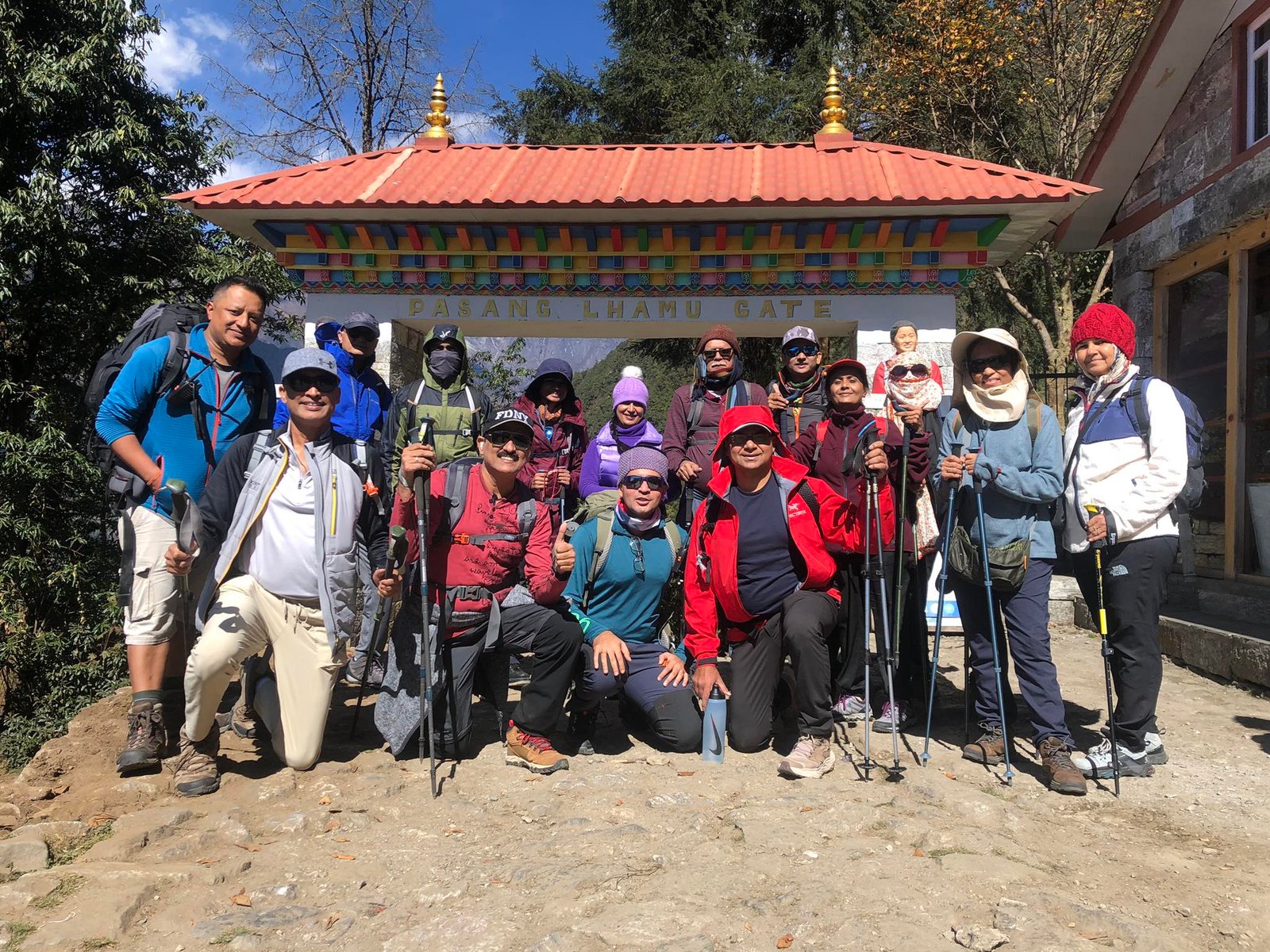
Drive from Kathmandu (1400 m) to Bhandara (2100 m)
Today, you'll start your journey to the mountains with an adventurous drive from Kathmandu to Bhandara. The drive covers approximately 200 kilometers (124 miles) and takes about 8 to 10 hours, depending on road conditions. The journey takes you through a mix of winding mountain roads and scenic countryside.
As you drive, you'll pass through lovely villages, terraced fields, and lush forests. The route offers glimpses of traditional Nepali life and the region's natural beauty. Expect bumpy roads and slow traffic as you navigate the mountainous terrain.
Arriving in Bhandara, a quiet village in the Solu region, you'll check into a local guesthouse. Enjoy a hot meal and relax after the long drive, taking in the peaceful surroundings of this remote village. This is an excellent opportunity to start acclimatizing to the higher altitude.
Breakfast, Lunch and Dinner
Lodge/Hotel
2100m
Trek from Bhandara (2100 m) to Sete (2575 m)
Your trek begins today as you leave Bhandara and head towards Sete. The trail covers approximately 14 kilometres (8.7 miles) and takes about 6 to 7 hours. The trek begins with a gradual ascent through terraced fields and dense forests. You'll cross several small streams and see traditional Nepali homes along the way.
The path shows beautiful views of the surrounding hills and valleys, making the trek both scenic and enjoyable. As you approach Sete, you'll notice the village's traditional architecture and welcoming atmosphere.
Sete is a small village situated at a higher altitude, which will help with acclimatization. Overnight in a local guesthouse, where you can enjoy regional cuisine and the serene environment.
Breakfast, Lunch and Dinner
Lodge/Hotel
2575m
Trek from Sete (2575 m) to Junbesi (2670 m)
Today's trek takes you from Sete to Junbesi, covering approximately 15 kilometers (9.3 miles) in 6 to 7 hours. The trail involves a series of ascents and descents through lush forests and traditional Sherpa villages.
As you trek, you'll cross several suspension bridges and pass through charming settlements where you can observe the daily life of the local people.
Junbesi is a picturesque village situated by the Junbesi River. Beautiful landscapes, including rolling hills and dense forests, surround it. The town is known for its traditional architecture and friendly locals.
You will spend the night in a local guesthouse, where you can rest and explore the village.
Breakfast, Lunch and Dinner
Lodge/Hotel
2670m
Trek from Junbesi (2670 m) to Nunthala (2220 m)
From Junbesi, you'll trek to Nunthala, about 14 kilometers (8.7 miles), which takes around 6 hours. The trek involves a gradual descent into the Dudh Koshi Valley. The trail takes you through terraced fields, small villages, and scenic landscapes.
Nunthala is a small village with a few guesthouses, offering a peaceful environment in which to rest. The altitude here is lower, which helps in acclimatizing for the days ahead. Enjoy a relaxing evening in Nunthala, taking in the local culture and beautiful surroundings.
Breakfast, Lunch and Dinner
Lodge/Hotel
2220m
Trek from Nunthala (2220 m) to Bupsa (2360 m)
Today's trek takes you from Nunthala to Bupsa, covering about 13 kilometers (8 miles) in 5 to 6 hours. The path involves a gradual ascent through terraced fields and dense forests.
As you walk, you'll pass through traditional villages and experience the local way of life.
Bupsa is a small, traditional village located at a higher altitude. It is a great place to rest and prepare for the upcoming trek. Overnight in a local lodge, where you can enjoy traditional Nepali meals and a peaceful environment.
Breakfast, Lunch and Dinner
Lodge/Hotel
2360m
Trek from Bupsa (2360 m) to Surke (2290 m)
Today's trek takes you from Bupsa to Surke, covering approximately 11 kilometers (6.8 miles) in 5 to 6 hours. The trail descends through terraced fields and crosses several small rivers. You'll pass through quaint villages and see traditional farming practices along the way.
Surke is a small village with a few lodges. It's an excellent place to rest and prepare for the next leg of your journey. Enjoy the serene environment and friendly hospitality of the local people.
Breakfast, Lunch and Dinner
Lodge/Hotel
2290m
Trek from Surke (2290 m) to Phakding (2610 m)
Today's trek from Surke to Phakding is shorter, covering about 10 kilometers (6.2 miles) in 4 to 5 hours. The path follows the Dudh Koshi River and gradually ascends to Phakding. The trail offers beautiful views of the river and surrounding mountains.
Phakding is a popular stop for trekkers heading to Everest Base Camp. The village has several lodges and guesthouses where you can rest and enjoy the area's scenic beauty. Spend the night in Phakding, preparing for the next day's trek.
Breakfast, Lunch and Dinner
Lodge/Hotel
2610m
Trek from Phakding (2610 m) to Namche Bazaar (3440 m)
On this day, you'll trek from Phakding to Namche Bazaar, covering about 11 kilometres (6.8 miles) in 5 to 6 hours. The trail involves a significant climb, as Namche Bazaar is located at a high altitude. The path ascends through pine and rhododendron forests and traverses many suspension bridges over the Dudh Koshi River.
Namche Bazaar is a market town and the gateway to the Everest region. The city offers various amenities, including shops, cafes, and lodges. It's a vital acclimatization stop, so you'll spend two nights here to adapt to the altitude. Enjoy exploring the town and its vibrant atmosphere.
Breakfast, Lunch and Dinner
Lodge/Hotel
3440m

Acclimatization Day in Namche Bazaar
Today is your acclimatization day in Namche Bazaar. It's crucial to take it easy and allow your body to acclimate to the more elevated altitude. You can take a short hike to the nearby village of Khumjung or visit the Everest View Hotel, which offers scenic views of Everest and other peaks.
You might also explore the local markets, visit the Sherpa Museum to learn about the region's culture and history or hike to the Tengboche Monastery. The hike to Tengboche Monastery will take around five hours, including a visit to the monastery. This day is designed to help your body acclimatize while allowing you to enjoy the beautiful surroundings.
Breakfast, Lunch and Dinner
Lodge/Hotel
3700m
Trek from Namche Bazaar (3440 m) to Tengboche (3860 m)
Today's trek takes you from Namche Bazaar to Tengboche, about 10 kilometers (6.2 miles), which takes around 5 to 6 hours. The trail continues through lush forests and offers stunning views of the Everest range.
You'll cross the Dudh Koshi River and climb up to the Tengboche Monastery, one of the most important monasteries in the Khumbu region.
Tengboche provides spectacular views of Mount Everest, Ama Dablam, and other peaks. The monastery is a powerful cultural and spiritual center for the local Sherpa community. You'll stay overnight in a lodge near the monastery, enjoying the serene environment and the spiritual ambience of the area.
Breakfast, Lunch and Dinner
Lodge/Hotel
3860m
Trek from Tengboche (3860 m) to Dingboche (4410 m)
From Tengboche, you'll trek to Dingboche, covering a distance of about 12 kilometers (7.5 miles) in 5 to 6 hours. The trail ascends gradually through alpine meadows and yak pastures. Along the way, you'll cross several streams and pass through traditional Sherpa villages.
Dingboche is a small village situated in a beautiful valley surrounded by high peaks. It's another essential acclimatization stop, so take it easy and stay hydrated. Spend the night in a cozy lodge, enjoying the peaceful atmosphere and sensational views of the surrounding mountains.
Breakfast, Lunch and Dinner
Lodge/Hotel
4360m
Acclimatization Day in Dingboche
Dingboche – 4700 m / 15419 ft – 5 hrs
Today is an acclimatization day in Dingboche. It's essential to give your body time to adjust to the higher altitude. You can take a quick hike to Nangkartshang Peak for panoramic sights of the surrounding peaks, including Lhotse, Makalu, and Cho Oyu. The hike takes about 4 to 5 hours and offers breathtaking vistas of the Everest region.
You can also explore Dingboche, visit local tea houses, or relax at your lodge. The goal is to allow your body to acclimatize while enjoying the stunning landscapes around you.
Breakfast, Lunch and Dinner
Lodge/Hotel
4700m
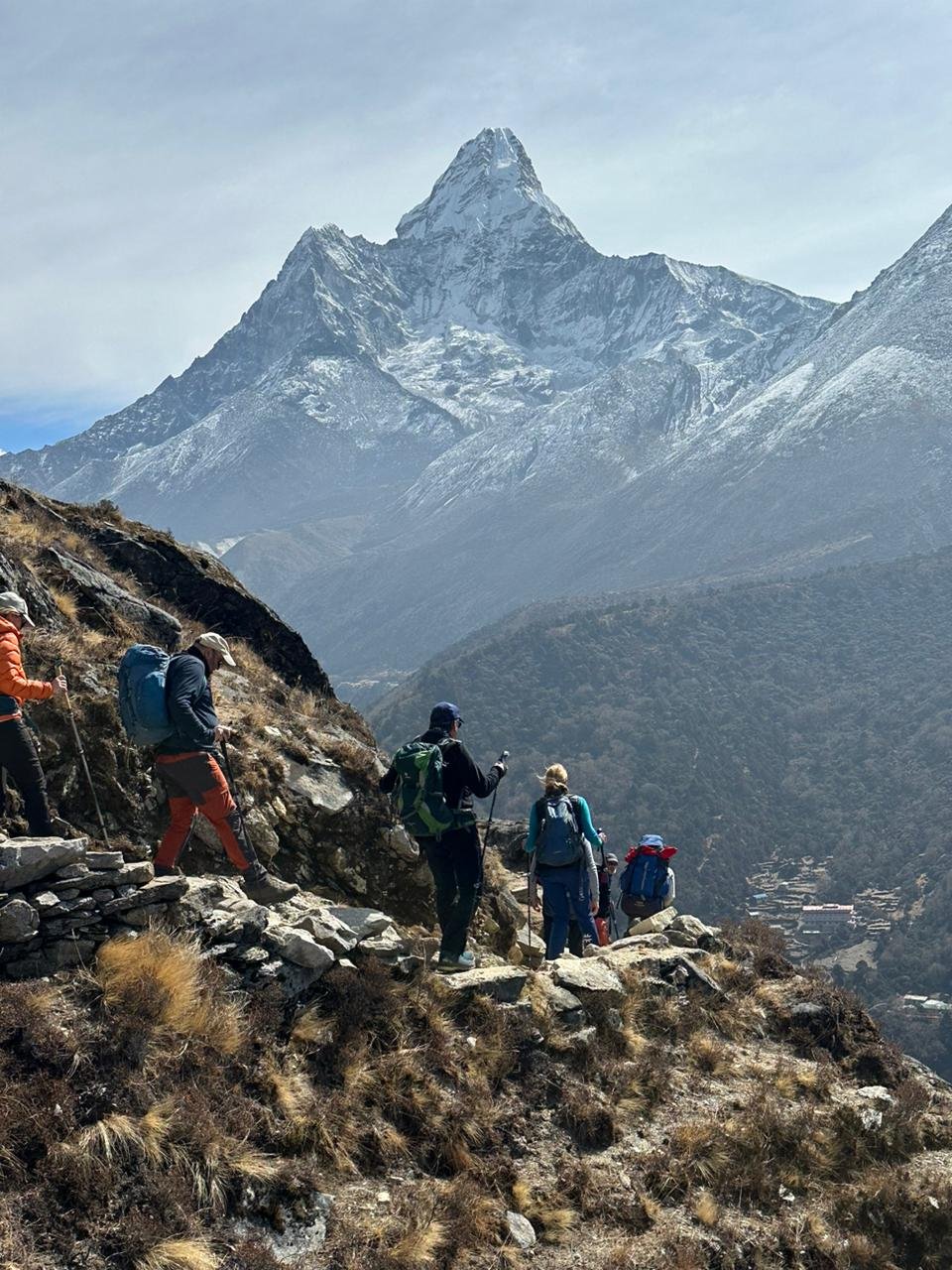
Trek from Dingboche (4410 m) to Lobuche (4910 m)
Today's trek takes you from Dingboche to Lobuche, covering about 8 kilometers (5 miles) in 3 to 4 hours. The path ascends steadily through rugged terrain, offering stunning vistas of the surrounding cliffs and glaciers. You'll pass through the memorials dedicated to climbers who have perished on Everest.
Lobuche is a small village at high altitude, and it's a vital acclimatization stop. Spend the night in a lodge, taking it easy and staying hydrated. Enjoy the stunning surroundings and prepare for the challenging trek to Everest Base Camp.
Breakfast, Lunch and Dinner
Lodge/Hotel
4910m
Trek from Lobuche (4910 m) to Gorak Shep (5140 m), then Everest Base Camp (5364 m)
Today is the highlight of your trek as you reach Everest Base Camp. The trek begins with a journey from Lobuche to Gorak Shep, covering about 5 kilometers (3.1 miles) and taking around 2 to 3 hours. The trail offers incredible views of the surrounding mountains and glaciers.
Once you arrive in Gorak Shep, you'll continue on to Everest Base Camp, a round trip that is about 8 kilometres (5 miles). The trek to Base Camp is challenging due to the high altitude and rugged terrain.
Upon reaching Everest Base Camp, you'll have time to take in the breathtaking views of the Khumbu Icefall and surrounding peaks. After you visit Base Camp, return to Gorak Shep for the night. This will be a memorable and rewarding day, marking the pinnacle of your trek.
Breakfast, Lunch and Dinner
Lodge/Hotel
5364m

Trek from Gorak Shep (5140 m) back down to Pheriche (4240 m)
After an exhilarating visit to Everest Base Camp, you'll trek back to Pheriche, covering approximately 13 kilometres (8 miles) in 6 to 7 hours. The path descends through the valley, passing through lush meadows and alpine forests.
Pheriche is a small village where you'll stay in a guesthouse. It's a welcome respite after the high-altitude trek. Enjoy a hot dinner and relax in the peaceful surroundings, reflecting on your incredible journey to Everest Base Camp.
Breakfast, Lunch and Dinner
Lodge/Hotel
4240m
Trek from Pheriche (4240 m) to Namche Bazaar (3440 m)
From Pheriche, you'll trek back to Namche Bazaar, covering about 17 kilometers (10.5 miles) in 6 to 7 hours. The trail descends through lush forests and crosses several rivers, retracing your steps back to the vibrant market town of Namche Bazaar.
Upon reaching Namche Bazaar, you can relax and enjoy the amenities of the town. After the challenging trek to Everest Base Camp, it's a well-deserved rest stop. Explore the shops, cafes, and markets, and enjoy a leisurely evening in Namche Bazaar.
Breakfast, Lunch and Dinner
Lodge/Hotel
3440m
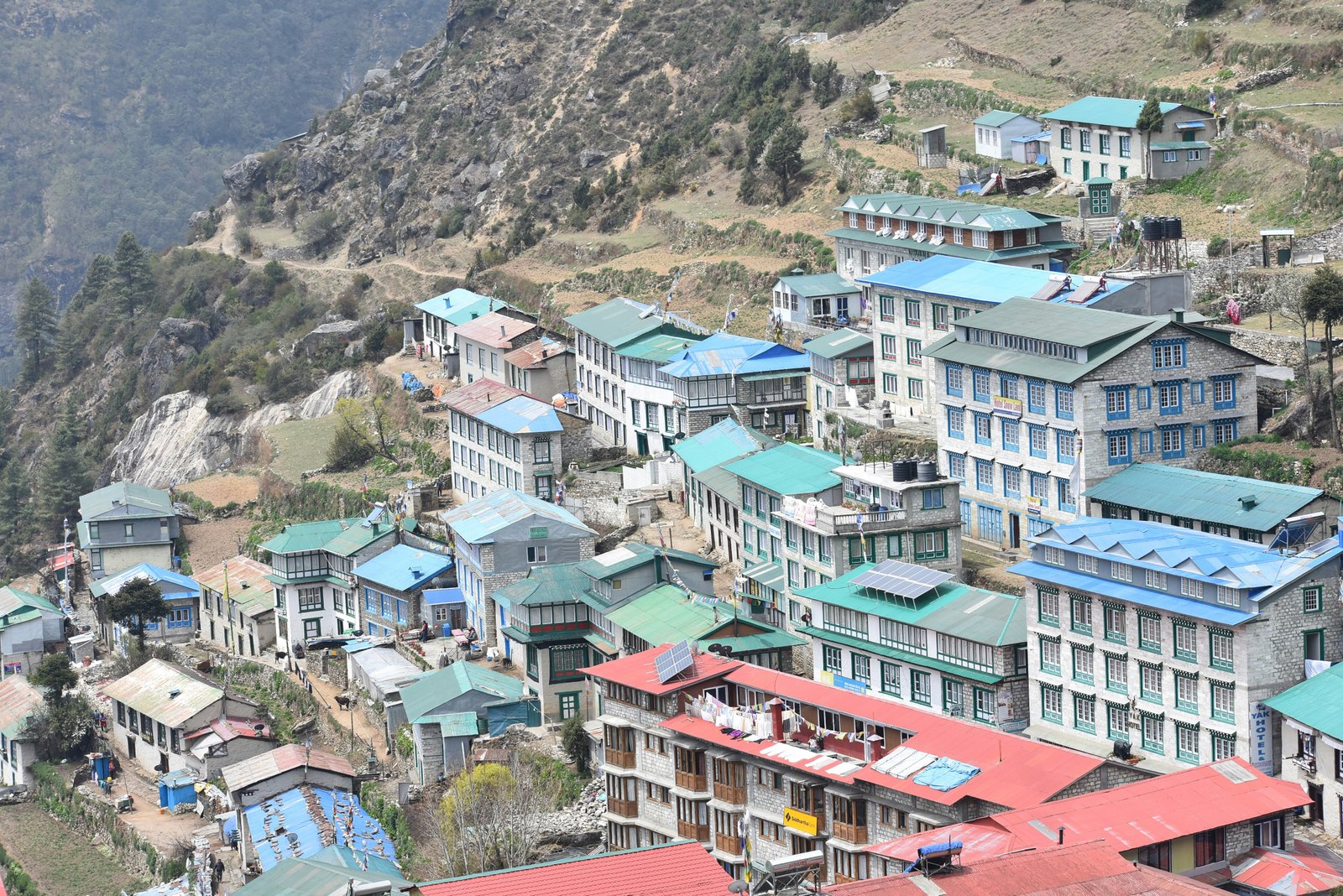
Trek from Namche Bazaar (3440 m) to Lukla (2840 m)
Today's trek takes you from Namche Bazaar to Lukla, covering about 18 kilometers (11 miles) in 6 to 7 hours. The trail descends through beautiful forests and villages, following the Dudh Koshi River.
Lukla is a bustling town with an airport that serves as the gateway to the Everest region. Spend the night in Lukla, preparing for your flight back to Kathmandu. Enjoy the final evening in the mountains, reflecting on the incredible journey you've completed.
Breakfast, Lunch and Dinner
Lodge/Hotel
2840m
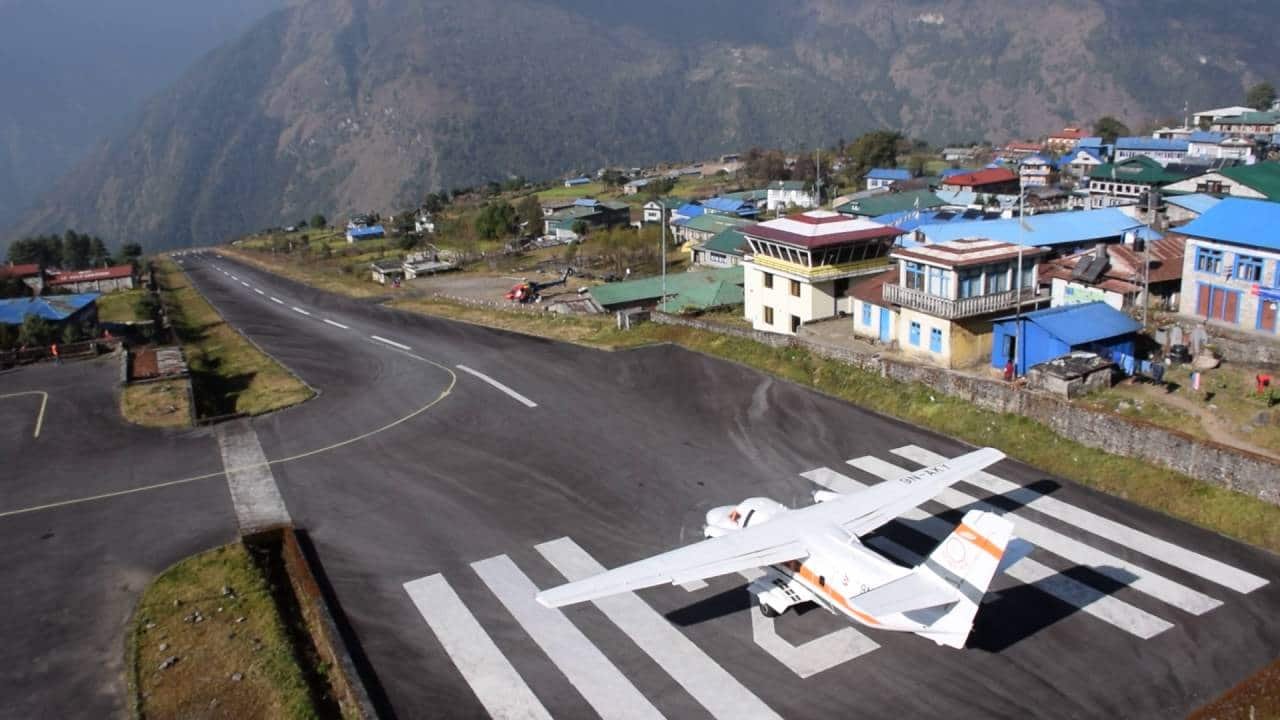
Flight from Lukla (2840 m) to Kathmandu (1400 m)
You'll take an early morning flight from Lukla back to Kathmandu. The flight gives stunning views of the Himalayas as you return to the capital city. Upon arrival in Kathmandu, you'll be assigned to your hotel.
Enjoy the rest of the day, resting and studying any parts of the city you may have missed. You might visit local markets, enjoy a farewell dinner, or unwind after your trek. This is an excellent opportunity to reflect on your adventure and soak in the vibrant culture of Kathmandu.
Breakfast, Lunch and Dinner
Lodge/Hotel
1400m
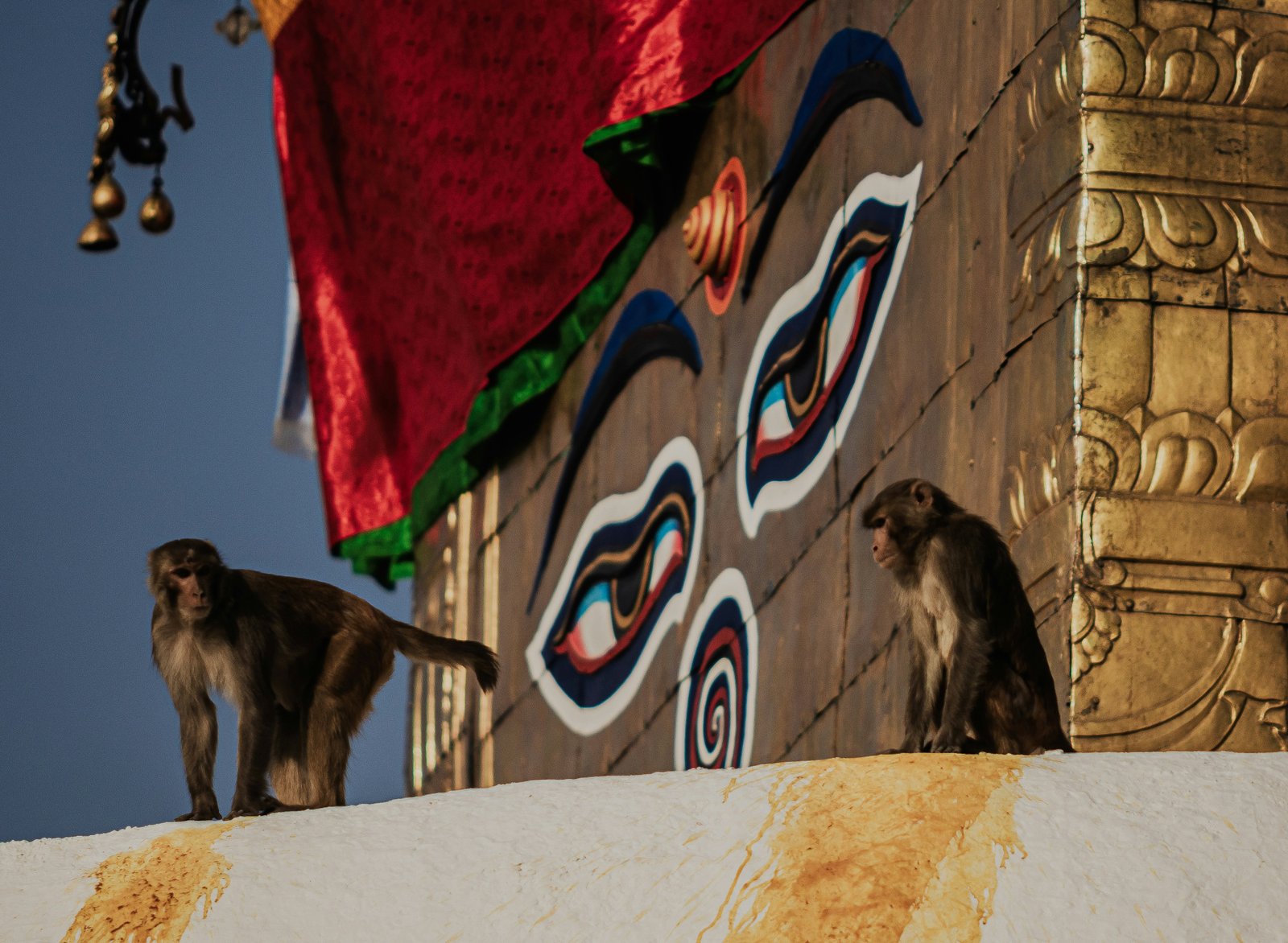
Departure
On your final day, you'll have some free time to do any last-minute shopping or sightseeing in Kathmandu. Depending on your flight schedule, you'll be assigned to the airport for your departure. Safe travels, and we hope you've enjoyed your trek to Everest Base Camp!
Breakfast, Lunch and Dinner
Lodge/Hotel
1400m
